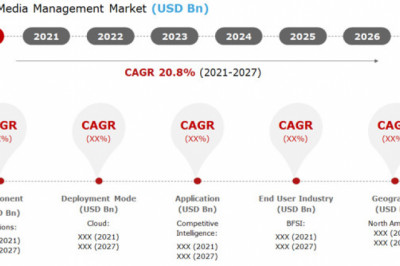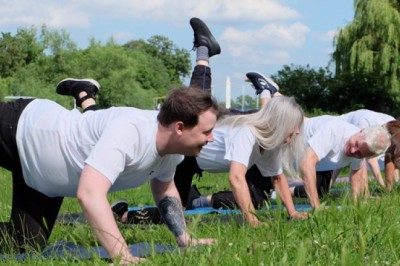views

Intuitively, we all have experienced a time when learning a task and/or learning from the social environment around us led to a greater level of competence. Perhaps we learned to manage our own emotions better in a high-stress environment. Perhaps the time called for a technical task, and we picked up a shortcut through observing an experienced colleague. Maybe it was a break-time office discussion on financial markets which we found informative. Certainly, learning enables task performance and enriches the quality of our lives, but how does it make us more resilient?
One pathway involves encouraging institutional and systemic resilience through skill acquisition and skill sharing. If Jim knows how to execute on a unique skill, he/they brings more skill diversity to the team, thus making the team adaptable to a wider range of social scenarios. Thus, skill learning can build resilience by conferring adaptability. If Jim knows how to teach the skill to others, then he can act as a force-multiplier to foster resilience across his/their workplace network.
Moreover, learning – particularly workplace learning – does not (indeed it should not!) occur in isolation. The aim is to build a community of learners. When multiple learners interact, there is a cross-pollination of different perspectives that occurs.
Here is a real-life work scenario that I would like to share:
Jim interacts with various potential customers, and takes modules on marketing and design and realizes, “perhaps the issue with our product is that we do not have a lite offering.”
His colleague Susan, who has learnt from the same modules and has had different conversations with existing users inverts the script: “what if the problem is that our dedicated userbase finds our product too basic, and we are simply not providing our users enough features?”
A brainstorming session occurs. The company lies in a red ocean industry…it simply cannot afford to wait and watch while the competition rolls out new options and interfaces. The team concludes that Susan was right: in the shorter timeframe, expanding functionality for their dedicated user-base should be their prime focus.
…And just before the sharks can circle in, the company experiences a growth spurt and thrives for another year. The team was resilient and ready for competition due to the communal learning experiences they were having.
“Perhaps, it’s the trust we build along the way…”
Being part of a community of learners and learner-sharers means the team grows in tackling and solving complex problems together. In doing so, communication gets more efficient, brainstorming rituals and processes get smoother, and the team builds more solidarity, saves time, and solves complex problems more effectively and efficiently. Learning can help us develop new skills, which in turn helps us be more adaptable to change. It also teaches us how to think critically about the world around us, and how to see things from different perspectives. Learning also relieves stress and anxiety, because we have a sense that we are in control of our own future.
For instance, for a problem involving project management, instead of hashing the issue out in an inconclusive conference call, a team – trained through efficient micro-learning modules and forum discussions – now uses a Kanban board and knows who should lead the discussion for efficient results.
Likewise, there was a time, perhaps, when in a client organization: Harry, Sally, Tim, Jim, Robert, Norbert, Terence, and Clarence, would all convene together to discuss problems critical to the firm. “We need to source new clients.” or “We need to firefight this partnership deal” or “Our marketing strategy isn’t working; do we need more/diverse forms of content?”
But since they began learning together, continuously upgrading their skills to gain an edge, and learning from each other’s experiences, they realized which small group would be the best fit for each emergency. Need to forge new client relationships? Tim, Jim, and Robert. Need to firefight and negotiate a deal gone sour? Terence, Clarence, and Harry. And so on… The team saved time and was now able to tackle multiple fronts with masterful execution at every turn.
At the same time, their learning equipped them with the psychological safety of knowing that each of them could step in to replace another team member, if the situation absolutely required it.
Learning builds resilience. But learning together builds trust, and trust builds antifragility: a team which learns and grows together learns to embrace novelty and disruption, instead of stultifying amidst it, or shying away from it. They also learn from failure and come out as a better team.
Time freed up became time to sow valuable crops for the client organization: managed to pro-actively recognize upcoming trends and build their client offerings around them, instead of “coping with new trends, and future risks” and reacting to the competition. Their learning culture made them fearless and enabled them to be proactive towards the future, transforming potential risks into novel opportunities.
When we embrace a continuous learning mindset and build the skills to thrive long-term, we start identifying future trends as opportunities rather than threats. We create a room to perform quick experiments and learn from them to take things forward. As we achieve transformative synergies in our human resource, the potential for the organization’s growth and development goes from incremental to non-linear.
References
1. De Kraker, J. (2017). Social learning for resilience in social–ecological systems. Current Opinion in Environmental Sustainability, 28, 100-107.
2. Jaaron, A. A., & Backhouse, C. J. (2014, July). Learning from chaos: the advent of antifragility in service organizations. In Proceedings of the 2014 POMS International Conference, Sungapore (pp. 1-8).
3. Cheruvelil, K. S., Soranno, P. A., Weathers, K. C., Hanson, P. C., Goring, S. J., Filstrup, C. T., & Read, E. K. (2014). Creating and maintaining high‐performing collaborative research teams: the importance of diversity and interpersonal skills. Frontiers in Ecology and the Environment, 12(1), 31-38.












